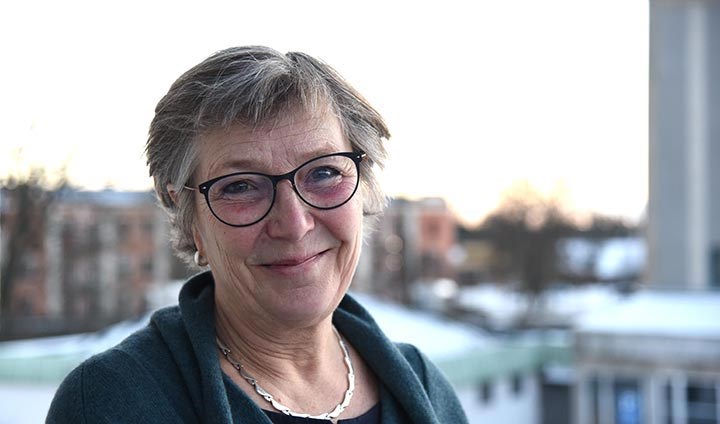Liselotte Hermansson - new professor 2019

Liselotte Hermansson is professor of occupational therapy. She studies how prostheses affect life for people born without arms or hands, or for those who later in life need to undergo an amputation of the arm.
1954 Born in Umeå, Sweden
2004 Obtained her PhD in medical science with a specialisation in neuropaediatrics at Karolinska Institutet with her thesis Upper limb reduction deficiencies in Swedish children – Classification, prevalence and function with myoelectric prostheses.
2014 Docent in medical science with a specialisation in healthcare sciences at Örebro University
2018 Adjunct clinical professor of occupational therapy at Örebro University
“My research concerns their life situation and I am interested in the significance and use of prostheses for these individuals’ function and health. The purpose of my research is to understand how people learn to use a prosthesis – and to develop therapy methods.”
Her research shows that adults born without an arm or a hand, or persons who have undergone an amputation, meet with difficulties in their everyday life. It is twice as common for these individuals to have muscular or skeletal problems, often in the non-amputated side of their bodies. Persons not using a prosthesis report more problems than those using a prosthesis. One explanation is that the use of a prosthesis is linked to having a job.
Liselotte Hermansson’s previous research also shows that the psychosocial health in children using prostheses is comparable to that of other children.
“One conclusion is that the fitting of prostheses for children should start at the age of three to create the best possible conditions for future use. The prosthesis should also be used for a large part of the day to enable the child to develop high skills in using the prosthesis in an everyday setting. Today, we therefore study what might affect use and what support we can offer our patients.”
Internationally, there is ongoing technical development of material, manufacturing and methods for controlling arm prostheses. Liselotte Hermansson’s research, however, is about the integration of technology and human capacity.
“I cooperate with researchers in technology and rehabilitation from different countries to develop and clinically test different hand prostheses,” she says.
Following her first degree, Liselotte Hermansson worked as an occupational therapist at the arm prosthesis unit at what was then the Regional Hospital Örebro.
“That’s where I discovered my growing interest in research. For example, I wanted to learn how children develop their ability to use myoelectric hand prostheses, that is, prostheses controlled by signals from the muscles. The aim was to make their therapy as successful as possible. This interest eventually led to my doctoral thesis.”
After she had obtained her PhD, Liselotte Hermansson was approached by colleagues primarily in Netherlands, USA and Canada who were interested in using the method she had developed for assessing the capacity to use arm prostheses, “The Assessment of Capacity for Myoelectric Control”.
Today, she is herself teaching courses in Europe and her colleague at Örebro University, Helen Lindner, is responsible for the development in Japan. The method is also taught in USA and Canada.
Liselotte Hermansson’s knowledge of methods for instrument development and validation, also known as psychometrics, has led to her involvement in other instruments for assessment. One example is the translation of WHO’s Disability Assessment Schedule 2.0, a method with which to assess health and disability within healthcare. Together with fellow researchers, she has also developed an instrument for assessing children’s experience of their affected hand, Childrens’ Hand-use Experience Questionnaire and she is now devising an Arabic version in collaboration with researchers in Jordan.
Liselotte Hermansson is head of the research team Treatment in Upper and Lower Limb Malformation or Amputation (TUMA) within the research environment Research Enabling an Active Life at Örebro University.
